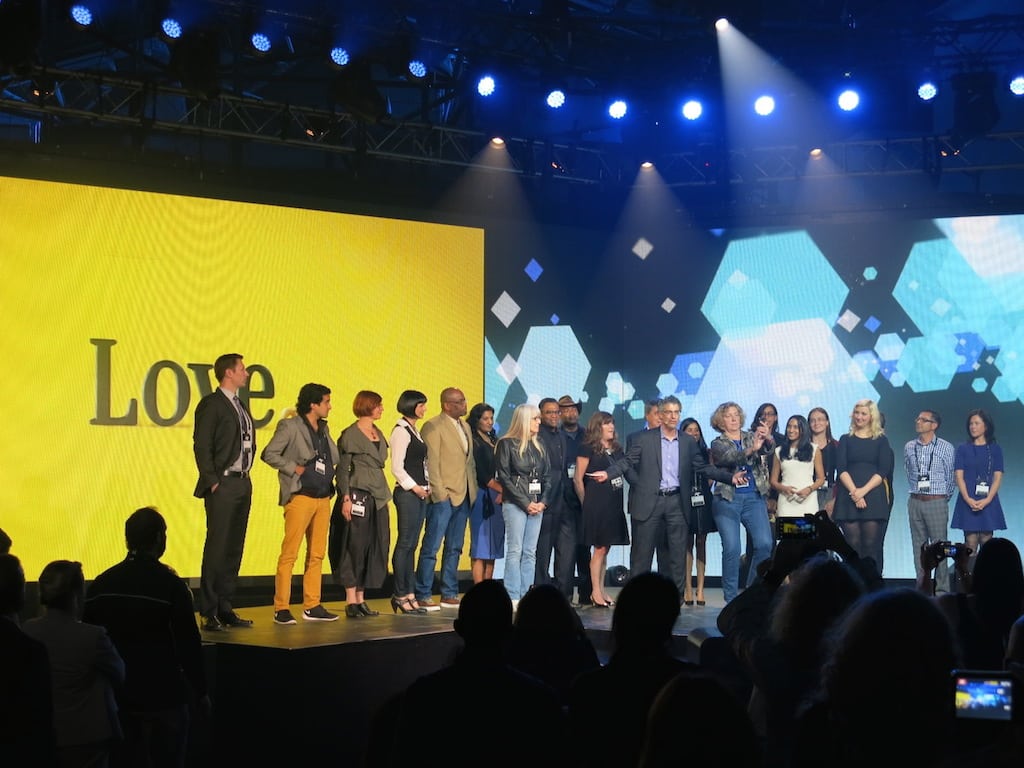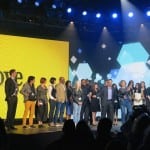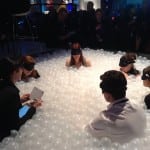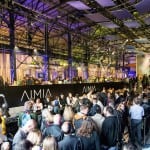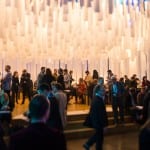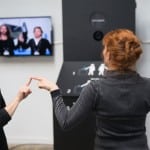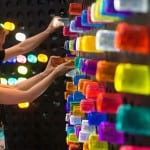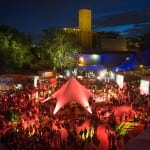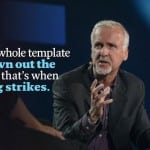Skift Take
By focusing as much on the conference user experience and content delivery platforms as the content itself, C2MTL is rewriting the rules of conference management and having a lot of fun in the process.
- Fast Company editor Robert Safian and honorees from the magazine’s 100 Most Creative People list
- The DIY Lab ball pit
- The Garage venue at the Plaza Solotech
- The Hangar entrance
- The Hangar
- Exhibit integrating human touch and photo technology
- Cellist and composer Philip Sheppard provided entertainment
- Street photography art gallery
- Human size Lite Brite
- Plaza Solotech and Fast Company-sponsored event tent
- Director James Cameron
During the third annual C2MTL conference in Montreal last month, well dressed groups of creative and business professionals were lining up to sit blindfolded inside a 10×10 pit filled with plastic balls.
The purpose of this experiment at the DIY Lab “innovation zone” was to group-think one of seven prepared questions inside a sensory-limited foreign environment to see if the shift in user experience would result in a shift in conceptual thinking. One of the questions was supplied by Abigail Posner, head of strategic planning at Google. She asked: “How might we create, with only a few resources, a YouTube channel about the interplay of humanity and technology?”
The “C2” in C2MTL stands for commerce and creativity, representing how today’s most successful companies are integrating more right-brain thinking into their overall business strategy. Regarded as Canada’s version of Austin’s edgy South by Southwest conference, C2MTL is a curated collision of interdisciplinary speakers from disparate industries in tech, business, design, music, entertainment and retail.
Montreal’s massive Arsenal contemporary art gallery, which was originally a 19th-century shipbuilding factory, returned as the host venue this year. C2MTL incorporated multiple innovation zones like the DIY Lab throughout the multi-building complex to supplement the high-profile presentations in the main Microsoft Forum theater by people like Posner, Fast Company editor Robert Safian, Zappo’s Tony Hsieh and film director James Cameron.
The Arsenal layout also included the main Hangar area with a central bar, a surprisingly large retail section selling local Quebecois fashions, an interactive games area with things like a life-size Lite Brite, and a street photography art gallery. Outside in the Plaza Solotech bordering Lachine Canal, Fast Company magazine and other brands sponsored communal seating areas for meals and impromptu networking, while the Garage, decorated with vintage televisions, hosted short presentations and live music.
Reinventing the Conference
C2MTL, or C2 Montreal, or just C2, was created by Jean-François Bouchard, CEO of the global Sid Lee creative agency, in cooperation with Tourisme Montreal and Montreal-based Cirque du Soleil. Over 4,000 people attended this year’s show, most paying $3,600 per head, with 46% arriving from outside Quebec and 25 different countries. About 42% were returning participants.
A primary reason behind the success of C2 is due to its advanced meeting planning architecture—what C2 calls a “creative ecosystem.” One of the biggest paradigm shifts in conference planning today revolves around Meeting Design, examining how user experience and technology have as much a role to play in the retention of content as the quality of content itself.
By creating all of these different innovation zones and ancillary pop-up programming, inside, outside, and around the block, it orchestrated constant movement among attendees leading to a kind of “accelerated serendipity,” as Hsieh describes it. This goes directly to the heart of Millennial psychographics revolving around the desire to shift between social and independent environment dynamics on a whim to create the most personalized, self-directed event experience possible.
A major tenet of Meeting Design acknowledges that we all interact with people and consume content in many different ways. The conference of the future offers a much wider range of interactive educational experiences to improve networking and engagement opportunities among a wider variety of personality types.
“However, there’s one trait among all successful creative people and entrepreneurs that’s very common—they’re very often ADD,” said Will Travis, CEO of Sid Lee’s New York headquarters. “We travel all over the world going to different conferences… and it’s often like sitting in a movie theater for eight hours, it just gets exhausting. I mean, if we were in a white box here for a week, we’d shoot ourselves. What we wanted to do is allow an escape, but not an escape where you’re suddenly departing the environment, so we created a lot of secondary pockets of stimulation among all of these different innovators.”
Along with the DIY Lab, others pockets included the Solutions Lab, Prototype Lab and Knowledge Market, all designed to help people spontaneously co-create ideas together.
“The main focus this year is transformation, and helping people get into the mindset where they’re comfortable to transform their agenda,” said Travis. “So, how are they not going to just stay static? How are they going to transform their businesses and their lives going forward? C2 is designed to make you change your perception about what you think you know.”
A roster of 76 speakers in creative and business disciplines presented their persepective on integrating commerce and lateral thinking over the three-day event.
Looking ahead, next year’s confirmed speakers at C2MTL include Chelsea Clinton and Kevin Spacey. C2 is also expanding internationally to Madrid and Shanghai in 2015, as well as an additional city yet to be named.
From Sid Lee’s perspective, the agency has created an impressive platform for sourcing new clients. For Tourisme Montreal, C2MTL helps the tourism board continue to aggressively position the city as an innovation thought leader.
“There wasn’t a great conference before that sort of brought all of these things together, and the reason it works is because we put on an event that we’d like to go to,” said Travis. “I don’t want to be punished because my business is sending me to a boring conference. I don’t have that kind of time to waste.”
We asked Travis why hasn’t this happened before? Why now the jump in interest among companies to integrate more creativity into business strategy?
“Any real leading CEO, regardless of the era, has always valued creativity,” he said. “But what’s changed over the last five years, creative people are much more respected at the board level, whereas they were at the bottom of company culture before. Companies like Apple and Samsung have hammered home the value of creativity and how it can really propel a business forward.”
Greg Oates covers hotel/tourism development and travel brand media. email / twitter
Have a confidential tip for Skift? Get in touch
